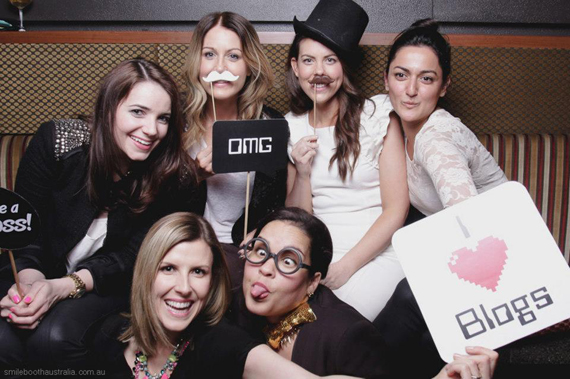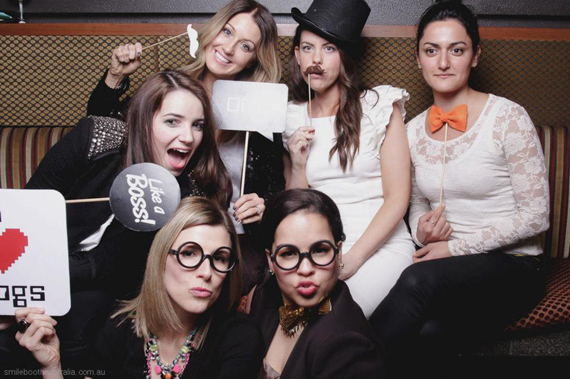Welcome to the second and final installment of my Problogger Event Wrap Up. I sat in on other sessions but didn’t take notes for all of them – and a lot of what was discussed will be covered in my blog series over the coming month. Feel free to fire away with any questions in the comments.
Click here to check out Part 1 of my recap and read on below for (even more) advice from the trenches…
Sarah presented twice, covering the topics The Media and Blogging and The Ten Simple Things That Turned Me Into a Full-Time(ish) Blogger (final keynote of the event), and even then I was left wanting more. Besides being gorgeous and a lovely person to boot, Sarah is seriously a font of knowledge – and the best part? She’s more than willing to share.
Highlights and words of wisdom below:
On blogging…
1// When she started out, Sarah knew she wasn’t a ‘white coat expert’ but that she was a conduit – a guinea pig experimenting and telling her own story, which helped her define her voice.
2 // Kerry Packer used to say “Don’t ask for permission, just know how to beg for forgiveness.” Be a maverick, try everything, make mistakes. You have to wade in and get dirty. Enter the fray.
3 // Sarah works with a “grubiness radar”- if what she’s doing starts to feel grubby, she stops doing it. She took comments off her blog and after a week, realised they were an important part of the site and her goal of connecting with humanity so they went back on. Don’t be afraid to change your mind.
4 // People can smell when you’re being inauthentic. Be cautious of when you’re starting to smell and ask yourself: “Am I cringing?”

{How Sarah makes her money – which is now around three times what she earned in traditional media}
5 // Map out all articles – beginning, middle and end – to ensure your article is structured and your message is clear. Try doing this the old fashioned way – pen to paper.
6 // Writer’s block? Follow the advice Sarah used to give her Cosmo staff who were struggling with a story: “Go to the pub.” She’d asked them to pretend they were at the pub with their best friend and to then explain what they were writing (which inevitably, would help them become “unstuck”).
7 // Whittle down to the minutiae when you’re telling a story. EG: Instead of saying “eat healthier food” say “eat scrambled eggs with turmeric.” Don’t be scared of the minutiae – go smaller and smaller and smaller.
8 // Work backwards. When Sarah was pulling together her I Quit Sugar eBook, she identified people she wanted to interview that already had established audiences and could help spread the word (Gwyneth Paltrow et al).
9 // Create your own boundaries. Sarah has a morning routine, checks emails twice day and steps “in and out” – sometimes she’s online more frequently and others she has to pull back and shut out the noise.
On design and essential blog components…
About page: add social proof by means of “As Seen In” media clippings. Ensure you’re making eye contact in your headshots and you have an up to date bio (or speakers spiel if you’re looking for speaking gigs) that media can easily grab from your site.
eBook design: tips from Sarah’s days as Cosmo editor – place important info in the top right and use odd numbers because from her experience, people like odd numbers (EG: 7 Reasons to Eat More Greens.)
Ensure the cover is beautifully designed with striking colours. Invest in photography.
On pitching to the media…
1 // Keep it short and sweet and place all information in the body of the email (no attachments).
2 // Go to the junior rather than the editor or executive producer. Let them bring your idea to the table for you.
3 // Look at what’s going on in the news and tie your product/ service in. Read mUmBRELLA, tune in to Media Watch.
4 // When you’re interviewed (especially on TV) always keep it to three salient points/ sound bites. Stay on message.
5 // The lead up to Xmas and over the break is generally a quieter time of year for newspapers and journo’s are looking for content. Help them out, which in turn, helps you.
It was a privilege to hear from international keynote and $100 Startup author, Chris Guillebeau, who also took the stage a few times presenting on Making Money & Changing the World Through Blogging and How to Turn Visitors Into Raving Fans with event mastermind, Darren Rowse.
Insights as follows:
On engagement…
Why are engaged readers are so important? Because engaged readers are more likely to:
+ Get something out of your blog.
+ Make your site more useful for everyone.
+ Help you promote your site and grow faster.
+ Visit repeatedly and view multiple pages per session.
+ Are more likely to contribute content.
+ Are attractive to advertisers wanting to work with you.
+ Are attractive to potential buyers of your site.
+ Are more likely to convert with genuine affiliate promotions.
On acknowledging readers and building loyalty…
Chris sent an email back to the first 10,000 people that subscribed to his list (over the first 1.5 years) to thank them personally for joining his tribe. He said most were surprised to hear from him and often asked if the email was an auto-responder. This one-on-one connection made him mindful of who he was speaking to.
Darren also relayed a story about sending a quick personal email to first time commenters to his blog, saying that one of the readers he emailed became his most prolific commenter over many years. When Darren first started blogging, he used to do free workshops in the local library and some of those people are still engaged with his blogs.
Side note: I’ll tell you why I love Chris – he’s one of those people that genuinely gives you his full attention when you meet. You know people that look you straight in the eye and when you shake hands, will put their other hand on top to create a sense of familiarity? He does that.
He also remembers your name (amazing, considering there were 300 people at that conference) and it’s very clear that he’s not in this for the numbers or the dollars – it’s all about the people and banding together to make significant change in the world. Respect.
Other snippets…
1 // Chris tries to always maintain a 50% balance between creating and connecting.
2 // Darren to Chris: Has building a big tribe been serendipitous? “In a way, yes, but there’s always been a solid commitment to working hard, so really, it’s a combination of both.” Moral of the story: very rarely do things just “land in your lap.”
Apart from being an excellent (and energetic) presenter, James Tuckerman from Anthill magazine totally knows his stuff. Key takeaways from his talk Lubricate Your Mind were to ensure your work is:
1 // Measureable: Don’t do anything online that can’t be measured.
2 // Findable: explore SEO so your work can be found.
3 // Shareable: Social channels let your readers share your message for you so it’s important to make everything you do shareable. Essentially, it’s about how you empower your target market to do your marketing for you (amplification).
3 // Manageable: what do you have set up to make life easier? This includes email responders, passive income coming in through eBook sales and so on.
James also asked “Why are Masterchef stars rich and famous?” Because they share their recipes for free, and because we know the quality, we want to buy their cookbooks and dine at their restaurants. Food for thought (zing!)
Top tip: Own the eyeballs. Rent the attention of your audience. The money’s in the database.
So there you have it, I hope you got as much out of these notes as I did. In case you missed it up top, you can click here for my first Problogger Event 2012 recap.
Over to you: I’d love to hear your thoughts and questions in the comments (and if you can, please share the love using the buttons below).










